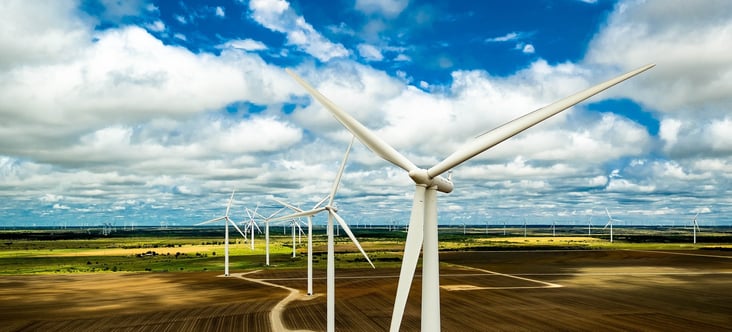
In advance of a Department of Energy study seemingly intended to suggest otherwise, we find mounting evidence from leading experts that advanced energy is helping America’s electricity system, not harming it. One new example: New York City cashing in on demand response in a big way this summer. Plus: Texas is “too windy and sunny for old energy companies to make money.” Isn’t that a shame?
Last week, Analysis Group released a study, commissioned by AEE and AWEA, Electricity Markets, Reliability, and the Evolving U.S. Power System, which concluded that changes to the U.S. energy mix resource mix pose no threat to reliability. This week, another independent study prepared by the Brattle Group for the Natural Resources Defense Council, comes to the same conclusion. Both Greentech Media and Utility Dive reported on both studies, as well as others that say much the same thing.
Both studies come after Secretary Perry asked DOE to conduct a 60-day study on whether wind and solar are undercutting “baseload” electricity generation like coal and nuclear power. At the time, we called it a shot across the bow of the advanced energy industry, mistakenly trying to prop up industries that are becoming less economically viable under the guise of “national security.”
It’s important to note that nobody—not AWEA, AEE, NRDC, and neither Analysis Group nor the Brattle Group, both respected industry consulting groups —is arguing that grid reliability is not a matter of national security. It clearly is. But the notion that renewable generation sources like wind and solar are to blame for shrinking market share for legacy generation sources, rather than low-priced natural gas and flat electricity demand, forcing price competition, is incorrect. Moreover, as the electricity grid incorporates flexible and responsive technologies allowing for agile and up-to-the-minute management, the term “baseload” generation has become an outdated concept.
From the Analysis Group study: “Recently, some have raised concerns that current electric market conditions may be undermining the financial viability of certain conventional power plant technologies (like existing coal and nuclear units) and thus jeopardizing electric system reliability. In addition, some point to federal and state policies supporting renewable energy as a primary cause of such impacts. The evidence does not support this view.”
From the Brattle Group study, as quoted in Utility Dive: “Overall, this report explains that the use of the term ‘baseload’ generation is no longer helpful for purposes of planning and operating today’s electricity system. As some of the coal and nuclear plants face retirement decisions, focusing on their status as ‘baseload’ generation is not a useful perspective for ensuring the cost-effective and reliable supply of electricity.”
For additional evidence, take the city that never sleeps. This summer, New York City is expecting to save 75 MW through demand response, and the city is looking to expand its DR program even further.
“We're essentially the end users,” said Leonid Zolotarev in an interview with Utility Dive. Zolotarev is the billing program administrator for the city's Department of Citywide Administrative Services. “The city participates as a customer, and the formal program is limited to NYC municipal buildings participating in the NYISO Special Case Resources demand response program. ... we are customers of NYISO and ConEdison, participating like any other commercial entity.”
Well, not quite like any other commercial entity. It’s a city of more than 8.5 million people with a total property value of more than $1 trillion. But the City also has experience with demand response. In 2013 NYC was able to avoid brownouts with its brand-new demand response program.
Meanwhile, in Texas, the energy mix is changing because, as Bloomberg reports, it’s just “too windy and sunny for old energy companies to make money.” Wind generation in South Texas is as wine to Napa Valley and peaches to Georgia, Ryan Collins writes. On the Texas Gulf Coast, the wind blows right in the middle of the day, when demand is highest, rather than at night. These daytime convection currents allow companies like AEE member Apex Clean Energy to harness the wind and drive down consumers’ electricity bills. Wind generation has expanded in recent years to nearly 20% of the electricity mix in ERCOT, and it’s showing no signs of slowing. Just ask the wind surfers.
“When the land heats up during the day, the difference in temperature sucks the colder air from the Gulf to the land, and that’s when we get the stronger wind,” Randy Rhodes, proprietor of Worldwinds Windsurfing said. “We’ll get a bump in the afternoon of another five miles per hour or so because of that thermal.”
Or you could ask a wind developer. “If you’re up in the northeast, even though it gets pretty hot in the summer, you still don’t have the delta between the temperature variances as great as you have along the Texas gulf coast,” said Jeff Ferguson, senior vice president of development at Apex. The company has five turbine projects in the area. “It’s just a perfect place to develop a wind resource.”
It’s as consistent as the winds in South Texas: AEE delivers the best advanced energy industry content direct to your mailbox. Sign up below for AEE Weekly:
